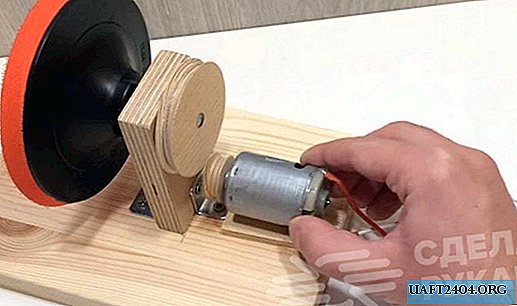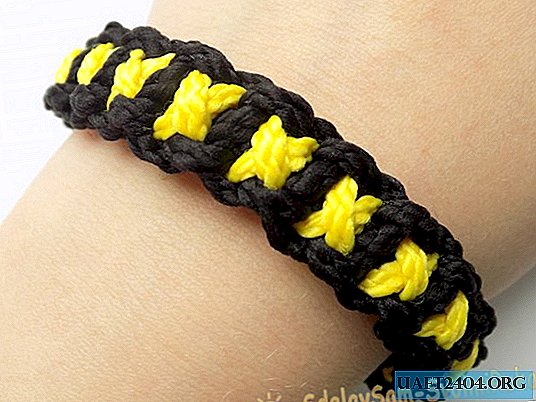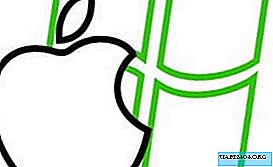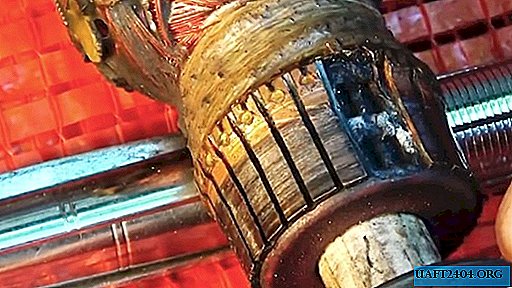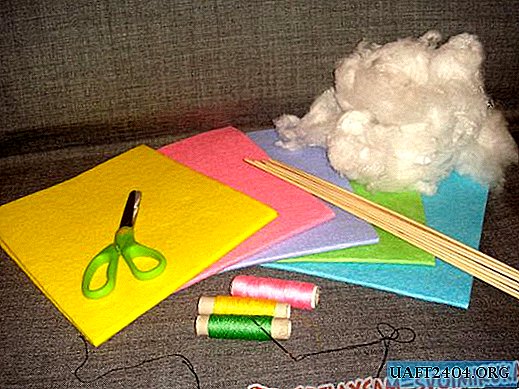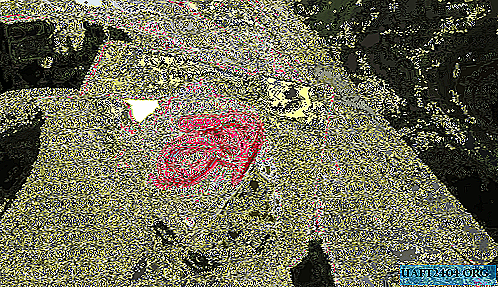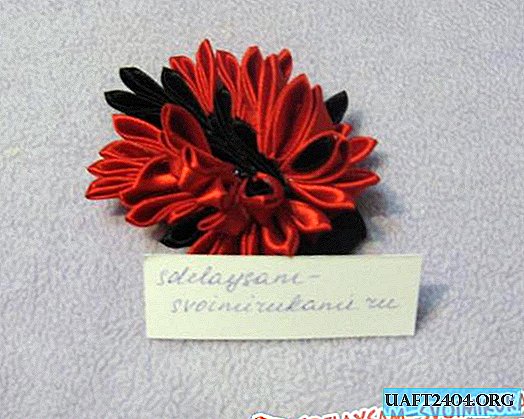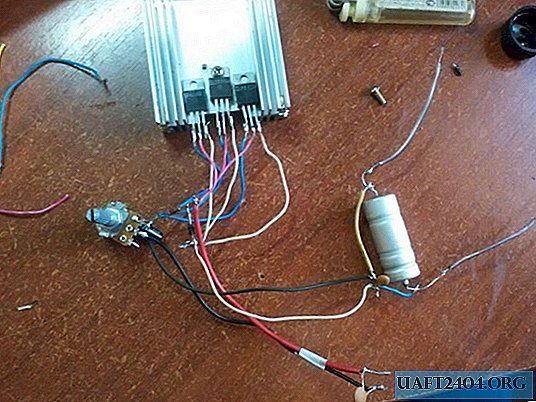I suggest decorating champagne using decoupage technique, napkin technique. She is gaining popularity among needlewomen recently. As a basis for the composition, however, I’ll take not a napkin, but a cardboard label from natural apple marshmallows. In this article I will tell you in detail how to prepare such a picture for decoupage.
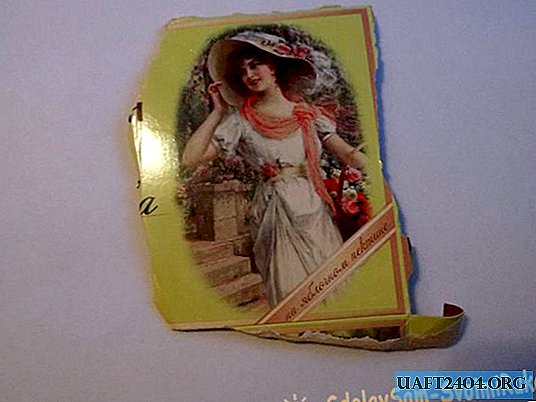
It is very important that for a presentation of this kind a good, expensive drink is purchased so that there is no contrast between the contents and the beauty of the container. I took Russian champagne worth about 300 rubles, with a characteristic recess in the upper third of the bottle. Before washing off the labels, I captured them in the photographs.


Bottle preparation
In order to prepare the surface for decoupage, you must first remove all the "native" labels. Hold the bottle in room temperature water for several hours, then remove the label with a sponge, brush. The remaining glue will be removed with cotton soaked in vegetable oil.
The next step is degreasing. All residual oil must be removed so that the paint adheres well to the glass. You can clean the bottle with alcohol, a special degreaser or liquid for washing windows and glasses containing alcohol. Go over the surface with cotton wool with the above funds, pat dry with a dry towel.

It is more convenient to apply paint to the bottle, not with a brush, but with a piece of a sponge for washing dishes. For convenience, attach it to a plastic clothespin. We do not prime with pure white paint, make the color matte: add yellow and black.

Apply successively, with obligatory drying, two or three coats of acrylic primer or paint. Bubbles of paint that will occur on the surface, you need a long time to burst with a sponge.

Preparing the main picture
So, while the paint is drying, you can do the picture. There she is.

This is cardboard, and any cardboard is several layers of paper. The top layer is glossy, as if already varnished, the pattern is applied on coated paper. The lower layers are darker and denser.
Turn the picture over, gently pull on the edge of the peeled cardboard. As shown in the photo.

Be extremely careful not to damage the paint layer!
The next step is to rub with a finger dipped in clean water on the surface of the cardboard, as if rolling excess paper into small rolls.

If it turns out that the cardboard can be folded again, then do it.

Try the picture on the bottle. Indeed, it looks noble.

The last step in preparing the picture: put the picture on the white paper with the colorful side, moisten it with plenty of water and continue to remove the excess paper with a cotton swab or finger (note that this is white, not light brown paper). It is important not to overdo it so that a hole does not form in the drawing.

Attention! Do not try to take a picture from white paper until it dries! If you are eager to continue working, blow dry the image.
Finishing work with the surface and the picture
Now the dried layers of paint on the bottle need to be sanded with sandpaper. With external smoothness, small cavities will form anyway. They can either be left without filling, or applied on top of a very thin, literally 0.1 mm layer of putty (apply with a plastic card or even with your finger).

Iron the picture from the inside out with an iron (average temperature).

To glue the first and main motive, prepare PVA glue. It will need to be diluted with water 1: 1 (one part of the glue and about the same amount of water), mix thoroughly.
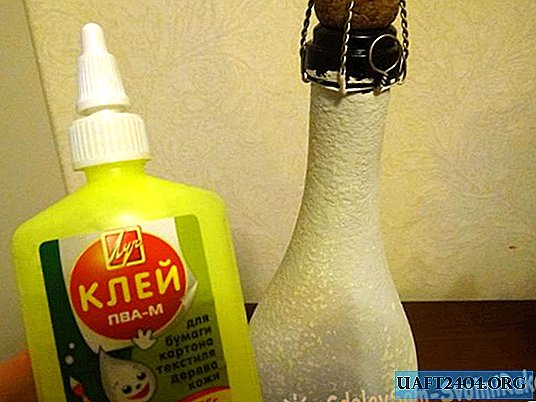
Decoupage
Smear the bottle in the place where the main plot will be located with PVA glue with water, capturing the periphery. To do this, put champagne on its side on a towel, which will not be a pity to stain with liquid glue.

Carefully stroke the picture with a brush or fingers. Since this is not a napkin, it is problematic to damage the paint layer, especially since the cardboard was like lacquer. By the way, when ironing, small cracks could form on the surface, this can be called the aging effect, which is often specially used by craftswomen.
For the main motive, you need to choose a suitable napkin in advance, then we will work with it using two techniques: decoupage with a file and direct decoupage. We will not paint the background with paint, it will be enough to take motifs that are suitable in color. I chose a serving napkin with the image of Paris: it has floral fragments, the Eiffel Tower, inscriptions (though for some reason in English), the names of Parisian streets.
In words, I recommend to be careful and tear them away from the napkin so that they can then be easily read on the bottle later. I have these words: "family, home, time" and others. You can also read such phrases: "Having someone to love ia family" and "Having somewere to go is home". Pleasant words that can be addressed to the person for whom the gift is intended.
So, the napkin is gradually torn into motives. Sometimes you need to look at the images for a very long time and think about where to attach this or that flower. Do not forget that when moistened, the napkin increases, the surfaces that cover dry and wet paper differ. No need to separate all the motives at once. Some may get lost in the process, or it suddenly turns out that the picture is too small.
At first, the fragments will be quite large, closer to the end of the work, you will stick more and more small motives or background elements, up to 2x2 mm.
The first I took a floral motif, as such a beautiful lady, as in our main picture, must certainly be surrounded by flowers. I place the drawing face down on the file, wet it with water and expel air bubbles from under the napkin with a soft brush.


Gently put the picture in the right place on the bottle. I’m shooting the file, the picture remains on the surface. And only now I coat the napkin with glue. Liquid glue impregnates the motif and firmly attaches it to the bottle.
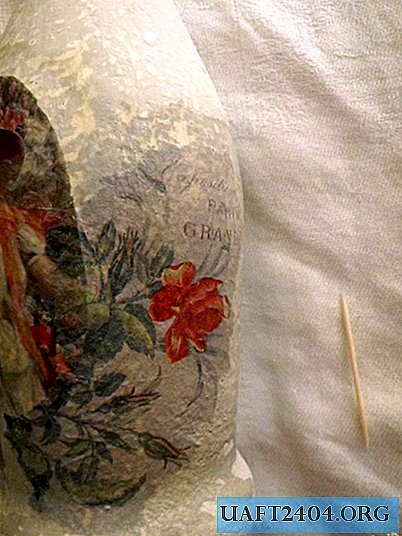
In the same way, I glue other larger pieces of cloth. In the photo below you can see the intermediate result. Important! Before each next step, I dry the surface with a hairdryer, sometimes it is necessary to correct the napkin with a brush or hand, but this must be done very carefully.


I have flowers around the girl.

So I try on a dry napkin with a motive, decide where to stick it. In this case, this floral motif was in a completely different place.

In the same way, I glue the whole bottle, turning it towards me, either one side or the other. Sometimes it’s more convenient to put it on the bottom, and sometimes it is put on a napkin. It happens that you need to smooth the surface with a sandpaper or tint the background (if glue has spread), each time I use a hairdryer for drying. I paste small fragments of a napkin without a file, using direct decoupage. I coat the dry napkin with glue and gently smooth it with a brush.
Some flowers were not fully depicted on a napkin. The color scheme of this work is as follows:
- gray, brown - the colors of the background, the inscriptions and the Eiffel Tower;
- red is the color of the rose;
- blue is the color of cloves;
- green is the color of the leaves.
I place incomplete flowers at the bottom or at the top of the bottle so that it feels like the whole flower is simply not visible.
At the very end of the work, using a braid and a glue gun, I decorate the cork.


Here is the result, see the photos.



Carefully inspect the bottle from all sides. There was no desire to correct something, to paint it with paints? Then it remains only to varnish the work.




It is better to cover the work with acrylic gloss varnish for 2-3 layers.


Some places do not dry out immediately, it takes time.

So, the work is ready! French romance emanates from the bottle, and in the pretty girl who is depicted on it, you can recognize yourself or your loved ones! So suddenly a picture came from a package of apple marshmallows. Be attentive to the world around you, it is full of wonderful things!




The remaining final photos will be transferred to the buyer through the LAN, the system does not allow you to add more images.

